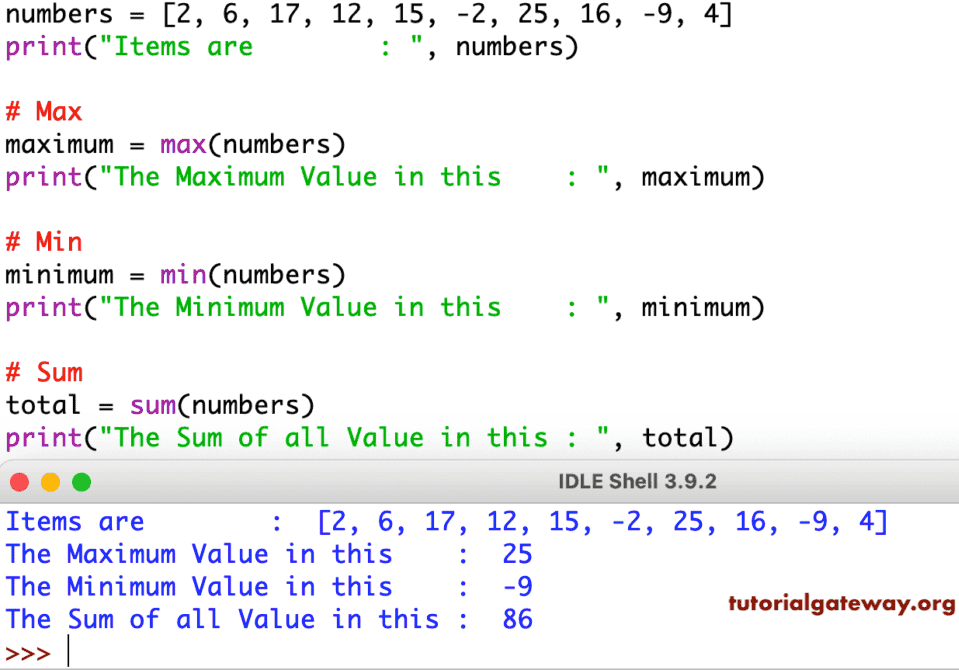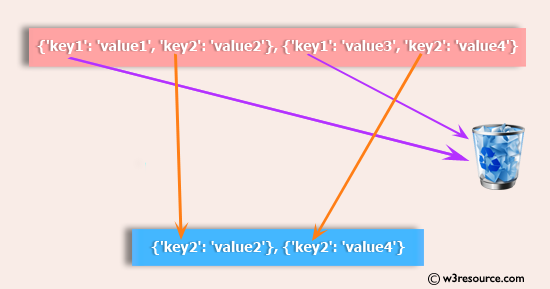

- #PYTHON LIST OF DICTIONARIES SUM VALUES HOW TO#
- #PYTHON LIST OF DICTIONARIES SUM VALUES GENERATOR#
- #PYTHON LIST OF DICTIONARIES SUM VALUES CODE#
#PYTHON LIST OF DICTIONARIES SUM VALUES CODE#
*In the code snippet iterating over the key-value pairs in a dictionary, we have used the built-in Python function repr, which returns the canonical string representation of an object, so that we can print string variables and have them echoed on the screen as strings. The same warning applies to dictionaries and sets, but not to tuples, which are immutable.

Additionally, if you want to iterate over a mutable sequence, like a list, you should be careful not to change the positions of elements as you iterate (unless you really want that behavior!). And if the same key appears in more than one dictionary, then the sum of values in list of dictionaries is returned as the value for that key >> > d. Sets can be iterated over similarly, although as with dictionaries, no particular ordering is guaranteed. The values () method on the dictionary will return a view of the dictionary's values, which can directly be passed to the sum () function to get the sum. The whole collection is enclosed in curly braces, or '.format(repr(k),repr(v))) Sum the values in a List of Dictionaries in Python Sum all values in a dictionary in Python Use the sum () function to sum all values in a dictionary. Key-value pairs, remove them from the dictionary, or reassign the value for a given key. Like lists, dictionaries are mutable: you can add more The contents of the brackets are not a numerical index indicating position, but Tuple method, and try to change it what happens?Īnother common and useful type is the dictionary or dict.ĭictionaries are collections of key-value pairs which, unlike list elements,Īre not ordered in a numerical sequence according to the order in which they were added.Īlthough dictionary values are accessed with brackets, Access an element in one of the lists in the tuple with the same Tuple to get the yth element of the xth tuple. Make a tuple of tuples and access the subtuples with Practice creating tuplesĪnd accessing their values. Adding several numbers together is a common intermediate. Here are some things you can do to become more familiar with tuples. Pythons built-in function sum() is an efficient and Pythonic way to sum a list of numeric values. TypeError: 'tuple' object does not support item assignment

> my_tuple = ('first', 'second', 'third') #Tuples look like lists, but with round brackets Must be fully assigned when they are created: This result saves to total and is output to the terminal as is.Tuples have much in common with lists-they are sequences and their elements areĪccessed with the index notation-but they are immutable, which means they Then, the functools.reduce() function is used with a Lambda to tally the wages. Total = functools.reduce(lambda tot, v: tot+wages, wages, 0)įirst, this code declares a Dictionary, wages containing five (5) key:value pairs of monthly income. Here’s how this applies to our example scenario: wages = You can use the functions sum() and dict.values() to sum all values of a Python dictionary with the expression sum(dict.values()).
#PYTHON LIST OF DICTIONARIES SUM VALUES GENERATOR#
Method 2: Use sum() and a Generator Expression.Method 1: Using reduce () + operator Step-by-step approach: Import necessary modules collections, functools, and operator. Let’s discuss different methods to do the task. We can accomplish this task by one of the following options: You have given a list of dictionaries, the task is to return a single dictionary with sum values with the same key. 💬 Question: How would we write Python code to sum dictionary values in Python? This total can be found by summing up (tallying) the Dictionary values. This data is stored in a Dictionary format. To make it more fun, we have the following running scenario:Īs a Python Freelancer, you would like to know how much money you made over the past few months.
#PYTHON LIST OF DICTIONARIES SUM VALUES HOW TO#
In this article, you’ll learn how to Sum Dictionary Values in Python. 4.7/5 - (3 votes) Problem Formulation and Solution Overview


 0 kommentar(er)
0 kommentar(er)
